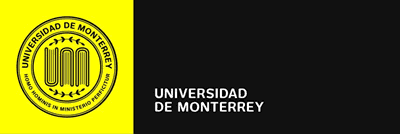Por favor, use este identificador para citar o enlazar este ítem:
http://repositorio.udem.edu.mx/handle/61000/3264Registro completo de metadatos
| Campo DC | Valor | Lengua/Idioma |
|---|---|---|
| dc.contributor.advisor | Sánchez, Anabela | - |
| dc.creator | Vivas Romero, María Nazaret | - |
| dc.date.accessioned | 2021-11-16T16:57:47Z | - |
| dc.date.available | 2021-11-16T16:57:47Z | - |
| dc.date.issued | 2012 | - |
| dc.identifier.citation | Vivas Romero, M. N. y Sánchez Martínez, A. O. (2012). How does the puzzle get constructed? a theoretical study on the construction of transnational families around the globe. [Tesis Pregrado]. Repositorio UDEM. | es_ES |
| dc.identifier.other | 33409002820177 | - |
| dc.identifier.uri | http://repositorio.udem.edu.mx/handle/61000/3264 | - |
| dc.description.abstract | Migration studies have undergone a sea change in the past two decades. (Levitt, Jaworksy, 2007) Most Scholars have recognized that many contemporary migrants and their past generations maintained a variety of ties to their home countries, while they also became incorporated and settled into new societies. From the l990s and on, a new perspective became key in many migration studies that is to say Transnationalism. This is how scholars acquired a transnational perspective. Portes (1999) one of the most important scholars in this perspective, reminds us that the starting point of transnational studies should be the individual. He suggested that in order to understand such transnational dynamics, one must begin by studying the human agency. Thus, today many scholars have begun to study the human agency. They have begun to study the starting point of that human agency, which they have named: the transnational family. Transnational families, have been appointed by many scholars as crucial, in order to understand migration paths and decisions. (Goulbourne, Reynolds, Solomos, Zontini, 2011, Mazzucato, 2008, Adams & Page, 2005, Ratha, 2003) However, today the exact prevalence of the phenomenon remains unknown. The cases that have been studied remain scattered and no cross-continental comparison exists. Today, almost one decade after the study of migrant families under a transnational perspective began; it became relevant to establish a state of the art on the subject. This paper then intended to be a state of the art in the subject. A state of the art based on the most recent literature on the topic; this in order to recognize the contributions of the research done on the topic. This exercise as I see it is a way in which we could establish further conclusions on the topic. This theoretical study could allow us researchers to embark on a starting point for future research on the topic. | es_ES |
| dc.format.extent | 87 páginas | es_ES |
| dc.language.iso | en_US | es_ES |
| dc.publisher | San Pedro Garza García: UDEM | es_ES |
| dc.rights | Atribución-NoComercial-SinDerivadas 2.5 México | * |
| dc.rights | Atribución-NoComercial-SinDerivadas 2.5 México | * |
| dc.rights.uri | http://creativecommons.org/licenses/by-nc-nd/2.5/mx/ | * |
| dc.subject | Sociología | es_ES |
| dc.subject | Medio social | es_ES |
| dc.subject | Sociologos | es_ES |
| dc.subject | Sociología cultural | es_ES |
| dc.subject.other | Emigración e inmigración | es_ES |
| dc.subject.other | Familia --Aspectos sociales | es_ES |
| dc.title | How does the puzzle get constructed? a theoretical study on the construction of transnational families around the globe | es_ES |
| dc.type | bachelorThesis | es_ES |
| dc.identifier.estudiante | María Nazaret Vivas Romero 000270405 | es_ES |
| Aparece en las colecciones: | Licenciatura en Sociología | |
Ficheros en este ítem:
| Fichero | Descripción | Tamaño | Formato | |
|---|---|---|---|---|
| 33409002820177.pdf | 25.14 MB | Adobe PDF |  Visualizar/Abrir |
Este ítem está sujeto a una licencia Creative Commons Licencia Creative Commons

